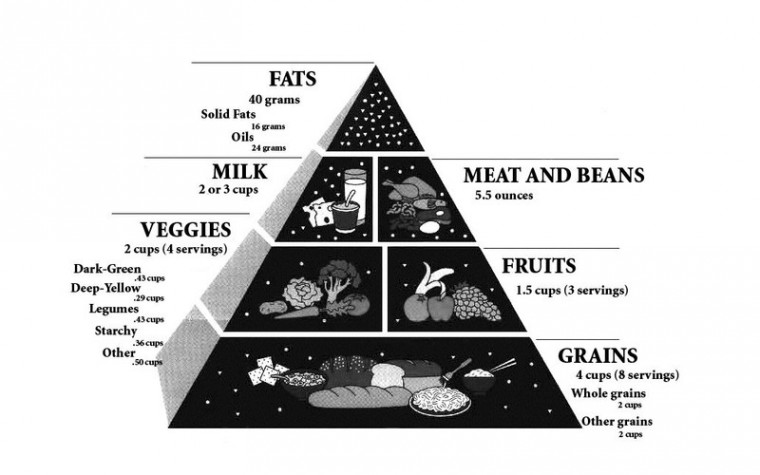
The U.S. Department of Agriculture is in the process of revising the food guide pyramid. Though the updated pyramid will have the same basic categories, new guidelines will distinguish between subgroups.
The food pyramid that many students have grown up seeing on cracker boxes and bread bags will soon receive a facelift to reflect new dietary guidelines released by the U.S. Department of Agriculture Jan. 12.
Under the new guidelines, five-a-day doesn’t cut it — health-conscious consumers should now distinguish between dark-green vegetables, such as broccoli and spinach, and deep-yellow vegetables, such as carrots and squash. Six to 11 servings of bread or cereal won’t do either, unless half are whole grain.
The main purpose of the changes, which further define the standard food groups, is to encourage healthy lifestyles and reduce the risk of chronic diseases, according to the USDA website.
In addition to differentiating between vegetable and grain types, the new guidelines also break fats down into “solid fats” and “oils/soft margarine.” The USDA suggests limiting trans fats and saturated fats, which are found in oils and margarine and are responsible for raising “bad” cholesterol.
The new guidelines still stress the importance of including fruits, vegetables and calcium-rich foods in a healthy diet, though the recommendations now specify that calcium should come from low-fat foods, such as skim or 2 percent milk.
The USDA also improved the guidelines by specifying measurements in cups, tablespoons, slices or pieces, as appropriate, for each food group’s serving size.
“Serving sizes used to be a problem because no one knew what a serving size was,” said Jane Jakubczak, nutritionist at the University Health Center.
Dining Services is careful to offer foods that meet these recommendations, though not all dining hall meals comply with the pyramid, Dining Services dietitian Sister Maureen Schrimpe said.
Both The Diner and the South Campus Dining Hall offer fresh fruits and vegetables that aren’t steamed in butter and never offer fried chicken without also providing baked chicken as an option, Sister Schrimpe said.
Even so, she added jokingly, about 80 percent of students choose the fried chicken anyway.
Dining Services also only offers skim and 2 percent milk, eliminating whole milk because of the fat content, she said.
Sister Schrimpe stressed that the decision to eat healthy and follow the guidelines is ultimately the responsibility of the students.
“If we were to make the choices, the students wouldn’t like it,” she said.
Her observation is true for freshman physics major David McGady, who said he often picks what to eat based on the length of the line.
“I don’t care about the nutritional value of the food,” he said. “I tend to eat what’s available.”
This is also the excuse for freshman environmental science and policy major Amy Wolfsheimer, who makes a bee line for the chicken tenders and French fries on Saturday morning.
“I don’t eat breakfast foods,” Wolfsheimer said. “The chicken tenders are quick and you never have to wait in line.”
For students who are concerned about getting the proper nutritional value out of what they eat, Jakubczak recommends trying to incorporate something from each food group into meals.
“Each meal should contain protein, carbohydrates and either fruit or vegetables,” she said.
Both Jakubczak and Sister Schrimpe said the new guidelines are meant to promote lifestyle changes over time. They aren’t a quick fix.
“They are really just trying to bring it all together instead of just saying eat two helpings of this or that,” Sister Schrimpe said.
The decision to eat healthier and follow the guidelines is ultimately up to the students. The dining halls provide healthy choices, but they can’t force a student to make the correct decisions.
“If I took chicken tenders off the menu, I’d be out of a job,” Sister Schrimpe said.



